IN-DEPTH / IN-DEPTH
International students try to discover China, understand CPC in the ‘red cradle’ of Chinese revolution
Yan’an Legacy Journey
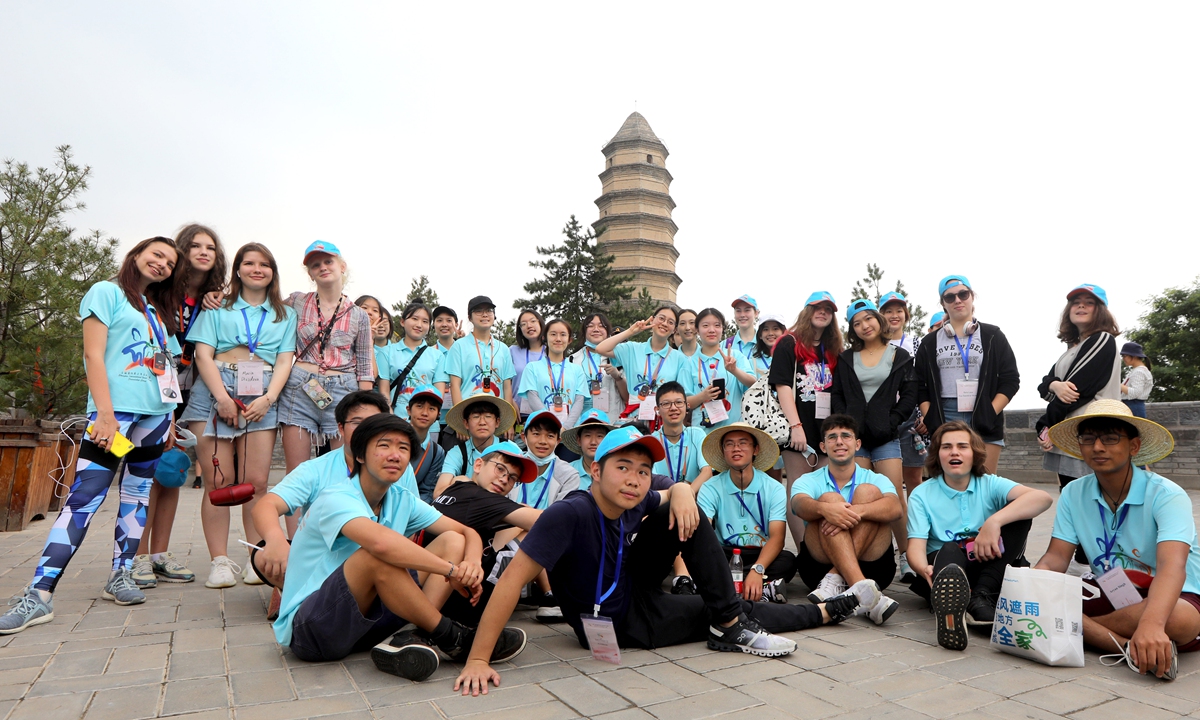
Foreign students have a group photo taken in front of the Baota Mountain. Photo: Chen Xia/GT
Yan'an, the cradle of Chinese revolution in Northwest China's Shaanxi Province, has become one of the most popular "red tourism" destinations in China for people who are interested in the history of the Communist Party of China (CPC). Yan'an is famous for being the place where the CPC established its main base after the Long March, when Red Army soldiers left their bases and marched forward to break the siege of the Kuomintang forces from 1934 to 1936.
On July 1, CPC just celebrated the centennial of its founding on July 1, 1921.
A total of 39 students from 16 countries including Australia, Brazil, India, Russia, Singapore, the US, the UK, Japan, South Korea, and China made a two-day trip to Yan'an from Friday to Saturday.
All the participating students currently live and study in Shanghai. Most of them study at international schools.
During their short stay in Yan'an, the students visited Chinese revolutionary memorial sites such as Yan'an Revolutionary Memorial Hall, Yangjialing Revolutionary Site - Yangjialing is a small village where late Chairman Mao Zedong lived when he was in Yan'an and where the CPC headquarters was stationed from 1935 to 1948, and the Baota Mountain where a symbolic pagoda became the beacon of the Chinese revolution in the 1930s-1940s.
The students also practiced yangko, a traditional Chinese dance, made dumplings, and tried their hands in the farms.
The Yan'an trip was part of a series of events for the 16th Shanghai International Youth Interactive Friendship Camp. It was organized by the Shanghai People's Association for Friendship with Foreign Countries, the Shanghai Youth Federation, and the Shaanxi Provincial People's Association for Friendship with Foreign Countries.
Friendship beyond nations
Before coming to Yan'an, most of the students knew little about the small city in the loess plateau.
After visiting Yan'an, 17-year-old Indian student Aryan Singh said Yan'an is pretty "good and urban, and people here are very well disciplined."
He noticed that many Chinese visitors look at the exhibits carefully at the Yan'an Revolutionary Memorial Hall with great respect. "They [Chinese people] respect the sacrifices the Chinese martyrs made for China," Singh said.
Notably, Yan'an also has witnessed a history of many international friends dedicated to the revolution in China. Over 600 international friends visited Yan'an during the 1935-48 period, such as American journalist Edgar Snow and Canadian doctor Norman Bethune.
When he learned that an Indian doctor named Dwarkanath Kotnis (1910-42) used to work in Yan'an, Singh said he would like to do more research on him afterward. In China, Kotnis was much better known by his Chinese name Ke Dihua.
Andrew Trybus, a 16-year-old American student, said that Yan'an has a "much better way of displaying its culture in general." Through seeing this culture, "I can understand China better," Trybus told the Global Times. "I can understand what makes it [China] strong from the cultural backgrounds to the beliefs and suffering throughout the years."
Trybus regarded this camp as a great chance to jump out of his comfort zone to make more friends. The friendship camp is to "make connections" with people from different countries with different cultures and experiences, Trybus said. "We can get a broader experience. We can live with a more open and broader mind-set."
It's also 15-year-old Jaden Ng's first time visiting Yan'an. He told the Global Times that he liked it for "being quieter" compared with a metropolis such as Shanghai. "It doesn't have that many people, but it is very rich in this culture toward preserving," Ng said. Ng comes from Singapore and loves Chinese culture, and he is good at martial arts.
Ukrainian Yelyzaveta Moisei, 13, also echoed Ng's opinion. Moisei told the Global Times that she really enjoyed the environment."I had made some Chinese friends in this camp and they're really nice," Moisei said, noting that it's a really "nice experience" with them.
Zhang Jingsen and Huang Xiaobo are two Chinese campers who both act as group leaders in charge of their daily life. In order to call his members to get up in time in the morning, Zhang played Suona, a traditional Chinese musical instrument, in front of their dormitories as a wake-up call.
"The most impressive thing for me in Yan'an is we worked together in the village," Zhang told the Global Times, adding that it's not easy to keep on doing it every day. They experienced the building of the silt dams in the village.
Huang echoed his opinion. As a young group leader, he said he had the responsibility to ensure each group member has a safe trip. Although he is the same age as the other boys and girls, he said "I'm Chinese here, I should behave well" and try to help them.
When visiting the Yangjialing Revolutionary Site, they ran into a group of college students from Shandong University of Technology who went to the sites to learn about the CPC history. The international students were excited to make new friends and exchanged ideas on why they came to the place. When saying goodbye, they hugged one another and had a group picture taken.
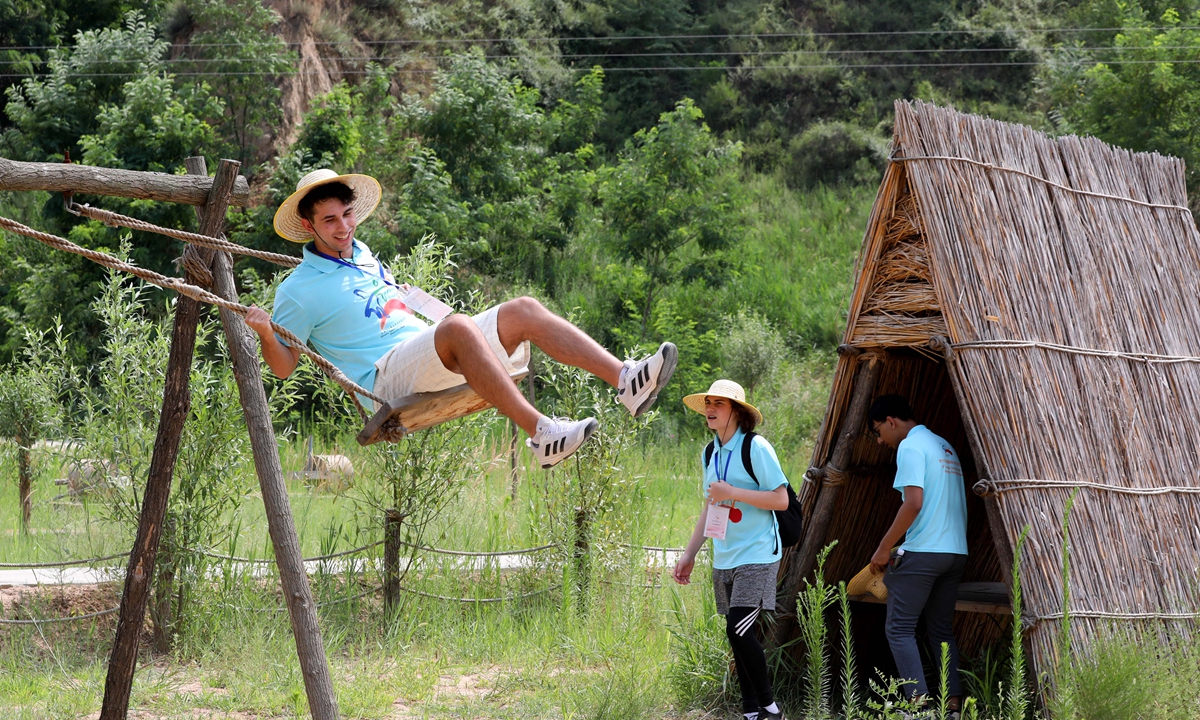
Andrew Trybus, a 16-year-old American student, plays on a swing. Photo: Chen Xia/GT
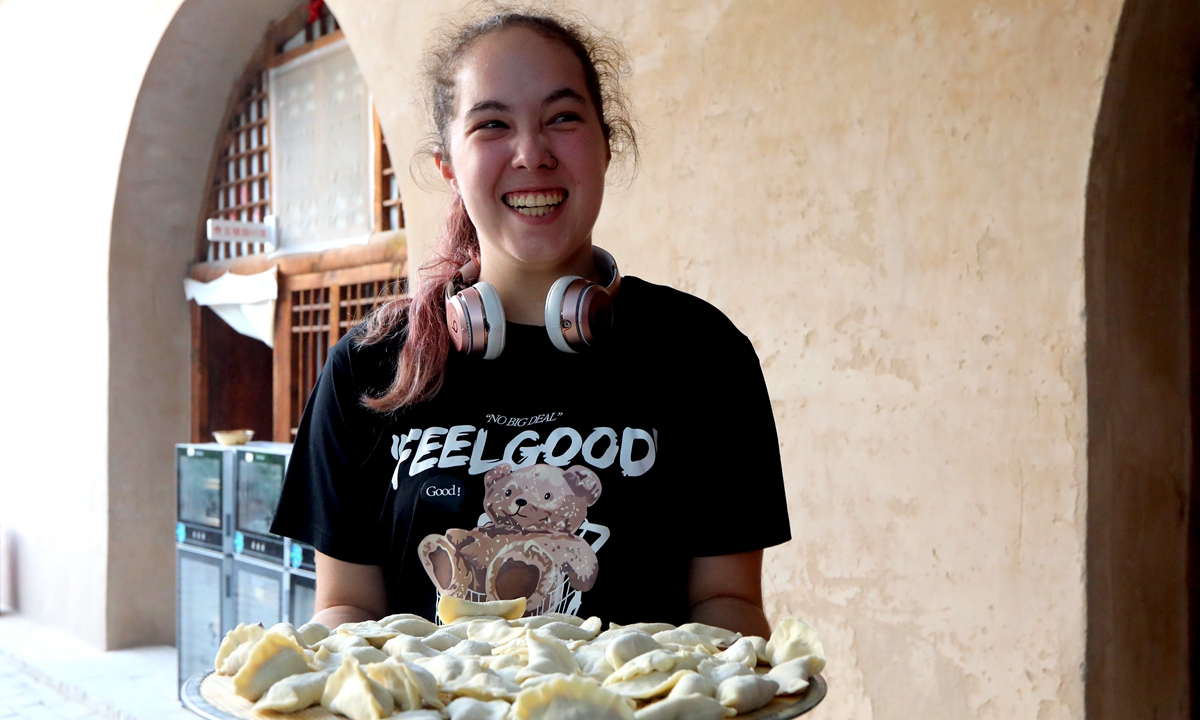
Maria Luiza from Brazil presents the dumplings she makes. Photo: Chen Xia/GT
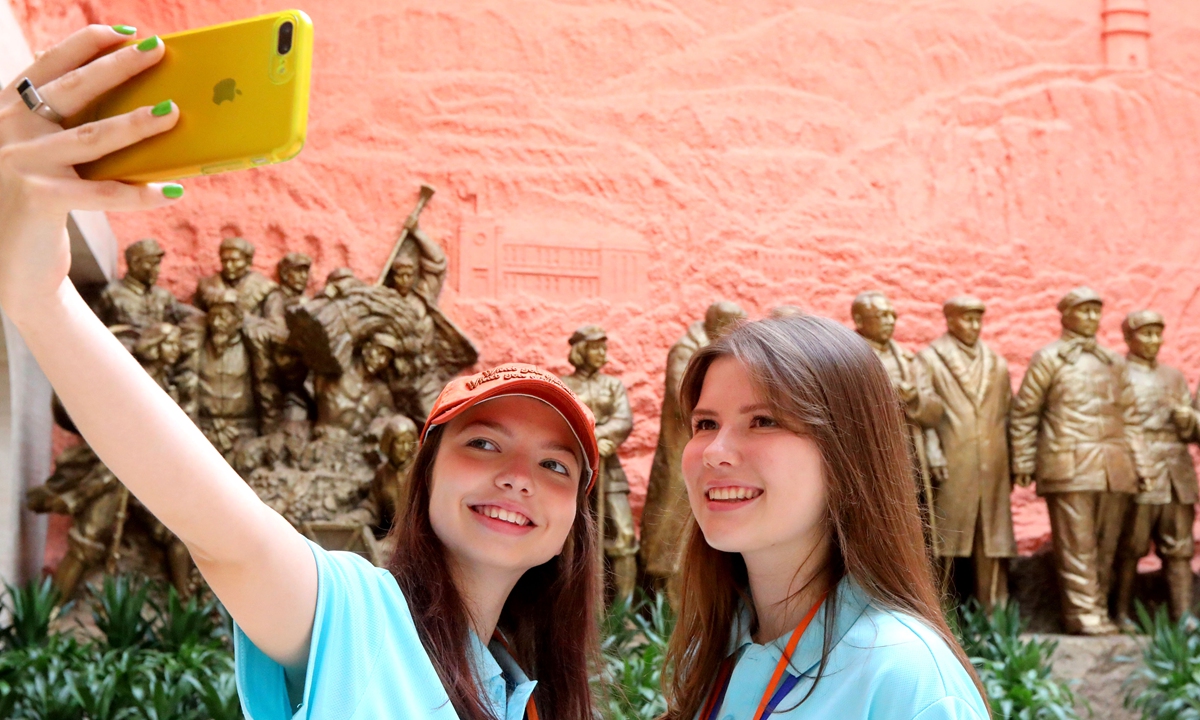
Russian students Elizaveta Koposova (left) and Maria Drozdova take a selfie at the Yan'an Revolutionary Memorial Hall. Photo: Chen Xia/GT
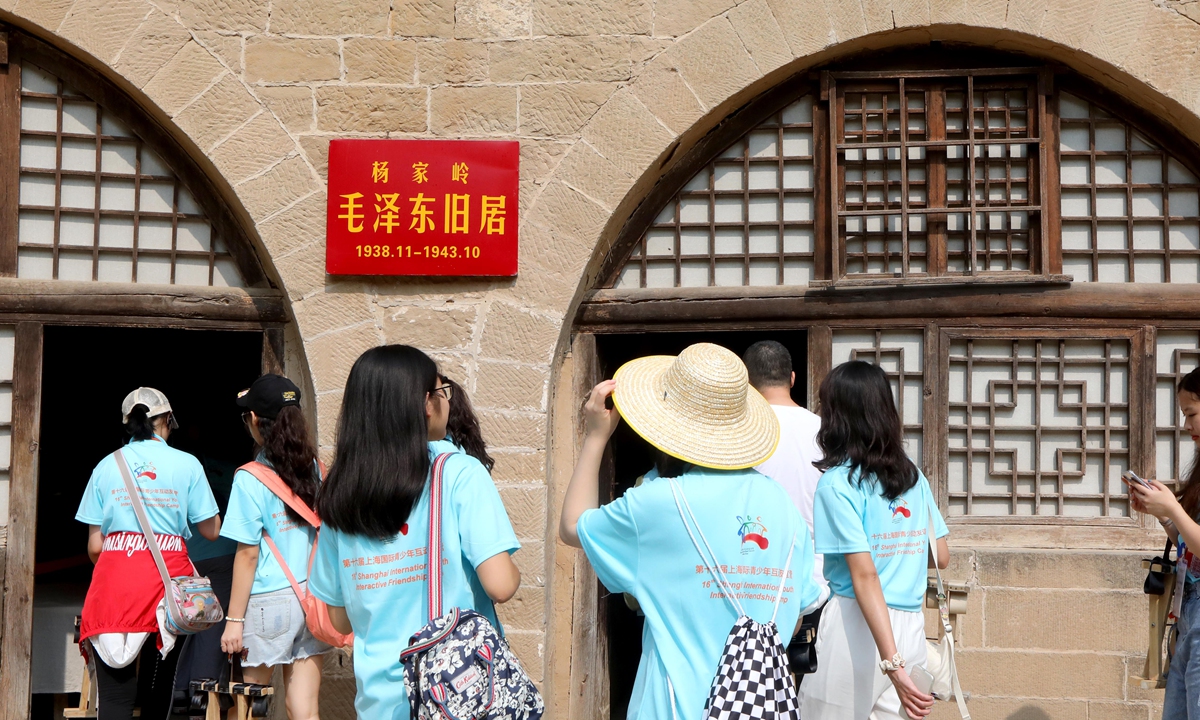
International students visit the former residence of Chairman Mao Zedong at Yangjialing Revolutionary Site. Photo: Chen Xia/GT
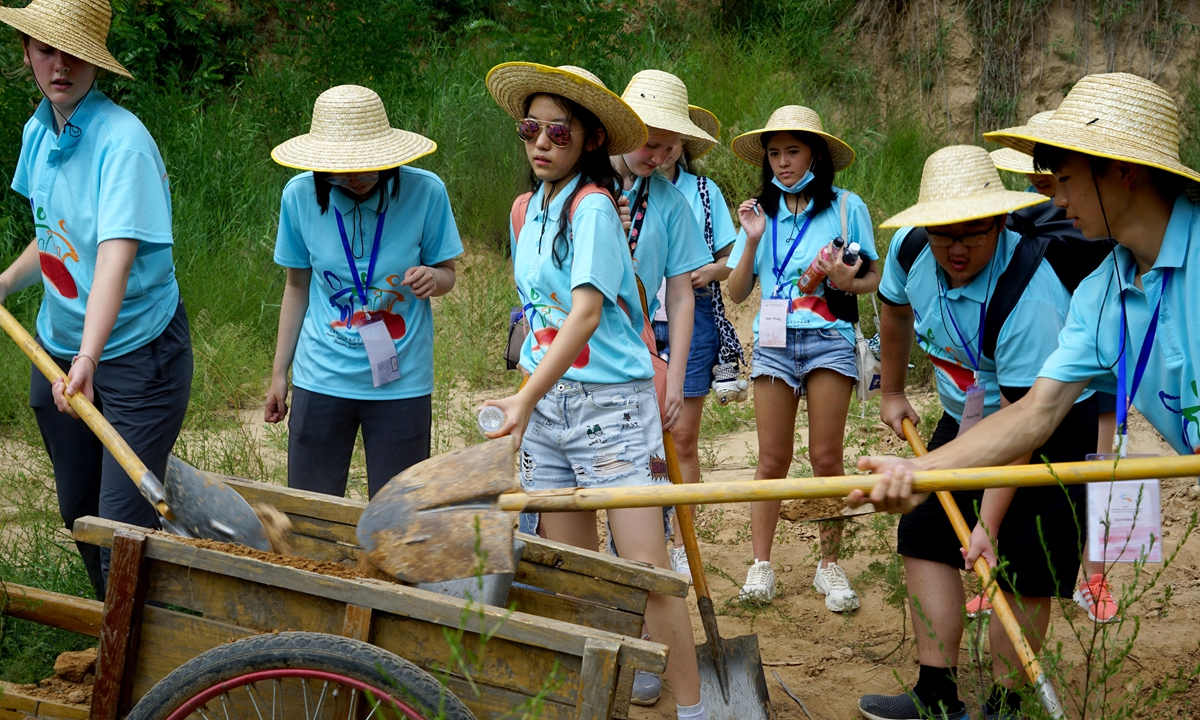
Some international students take part in manual labor. Photo: Chen Xia/GT

